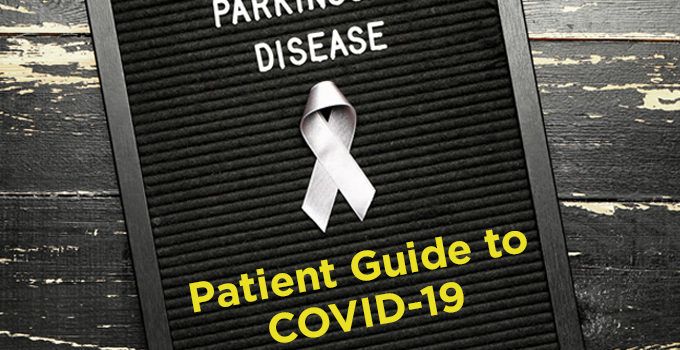

Parkinson’s Disease: Patient Guide to COVID-19
by Giselle Tamula
Dealing with Parkinson’s Disease poses its own challenges, but managing your disease while worrying about the current pandemic can be even more stressful. Here are some basic questions answered, about navigating the coronavirus (COVID-19) pandemic with Parkinson’s Disease.
The last few weeks have been challenging for everyone, and the challenges will most likely continue for several more weeks. All of our lives have been significantly interrupted by this pandemic. Many of us are experiencing anxiety, and there are more questions than answers. Your family at the Pacific Movement Disorders Center is here to help you navigate through this difficult time by answering some questions you may have regarding to COVID-19. Please note that our advice and answers may shift as new information comes in.
What is COVID-19?
COVID-19 is an infectious disease that comes from a new virus that can cause fever, cough, and shortness of breath.
How can I get infected?
The virus spreads primarily through contact with an infected person who coughs or sneezes, and whose saliva/droplet enter your eyes, nose, or mouth. You can also get the virus if you touch surfaces that have the virus and then touch your eyes, nose, or mouth.
Will a person with Parkinson’s Disease (PD) be at a higher risk of contracting the virus?
No. People with PD do not have a higher risk of contracting the virus. However, people with PD may have a more severe reaction to the virus. This means that people with PD may have a more challenging course if they get the disease.
How can I protect myself from getting the coronavirus?
There are several things you can do to protect yourself:
- You can protect yourself by practicing social distancing. This means you need to stay at least 6 feet away from other people.
- Practice good hand washing technique. This means you should wash your hands with soap and warm water for at least 20 seconds by rubbing your palms together, tips of your fingers, including your thumb, and the back of your hand. A good rule is to sing the happy birthday song twice.
- Use hand sanitizer with at least 60% alcohol if soap and water are not available.
- Stay at home. Avoid unnecessary exposure to crowds.
- Eat healthy food that strengthen your immune system, such as whole food, like fruits and vegetables.
- Get some rest and sleep.
What do I need to do if I develop symptoms of COVID-19?
If you develop symptoms, such as fever, cough, and/or shortness of breath, isolate yourself immediately. If you live with other people, stay in one area of your house that is separate from the rest of the people in your household. If possible, have a designated bathroom for yourself. Separate your eating utensils.
You can call your healthcare provider so they can determine if you need to be tested for the virus or not. Do not just show up in your doctor’s office without notification. Your advance warning will help protect the members of the health team and other patients from the virus, and prepare in advance an isolation room for you. If your symptoms become more severe, such as increased shortness of breath, call the nearest emergency department.
How many days should I remain isolated if I get COVID-19?
If you are positive for the COVID-19 virus, or experience symptoms of COVID-19, stay in isolation. Patients who are self-quarantining should continue to do so until:
- At least seven days have passed since symptoms first appeared AND
- At least three days (72 hours) have passed since recovery of symptoms (defined as resolution of fever without the use of fever-reducing medications and improvement in respiratory symptoms [eg. cough, shortness of breath])
Should I go to my doctor’s appointments?
If you are going for a routine follow-up, it may be best to check if your health provider offers virtual visits or telehealth. Your Pacific Movement Disorder providers offer secure video visits using Zoom, which is double encrypted for safety. You will need to activate MyChart and download both the MyChart and Zoom applications. Further instructions will be given prior to your virtual visit. If you need to see your provider urgently, call the office for guidance.
What medications do I take if I develop symptoms of cough or fever?
If you develop signs and symptoms of cough and/or fever, you can take over-the-counter medications such as Tylenol. Take no more than 3000 mg (i.e., six extra-strength tablets) per 24 hours (and no more than 2000 mg (i.e., four extra-strength tablets) per 24 hours if you have liver disease). If you are taking MAO-B inhibitors such as Azilect (rasagiline), Eldepryl (selegiline), or Xadago (safinamide), avoid medications with dextromethorphan or “DM” which is commonly given with cough medications. While there is no clinical research for avoiding Advil or Motrin (ibuprofen) at this time, some medical practitioners warn against taking it for COVID-19 symptoms as it may lower your immune response to the virus.
Can I still exercise?
You definitely should continue to exercise. There are free exercise videos you can do at home. If you do not have any symptoms, you can walk outside, provided you maintain a social distance of at least 6 feet. This guideline may change at any time. Make sure to check with your local governing agencies. Here are some web-based or virtual classes you can consider participating in.
- Dance For Parkinson’s
- Power for Parkinson’s (voice and body exercises)
- Re+Active Classes
- Yoga for Parkinson’s
- Orange Theory at Home (fitness classes, not specifically for PD)
I feel anxious and depressed. What can I do to feel less socially isolated while maintaining safety?
First, it is okay to feel anxious or depressed. While there are so many things we cannot control, we do have things that we can. We do have control of our emotions or how we feel. We can acknowledge our feelings and put in place systems that we can potentially help us overcome them. We can do this by writing in a journal, practicing meditation, or calling family or friends. You can join online groups that you have similar interests with and share ideas. You can join online support groups. You can write emails or actual written letters to friends and loved ones or you can utilize FaceTime, Skype or any virtual apps to stay connected. You can check out things you are curious about and learn to do them. You can take online courses.
Below, are a few Parkinson’s disease specific websites that provide free online webinars and information.
These are unprecedented times. Everyday we see so many changes. Yet you are not alone. We are in this together. Your Pacific Movement Disorders team will continue to provide excellent and holistic care for you and your love ones, as we always do.
Stay safe and stay healthy everyone!
For more information, schedule a consultation at Pacific Movement Disorders Center or call at 310-582-7433.
About the Author

Giselle Tamula
Giselle Therese U. Tamula, MSN, NP-C, is a certified nurse practitioner with extensive clinical experience. A dedicated caregiver, she brings her competent and compassionate care of patients to the Pacific Movement Disorders Center at Pacific Neuroscience Institute.
Last updated: March 31st, 2020